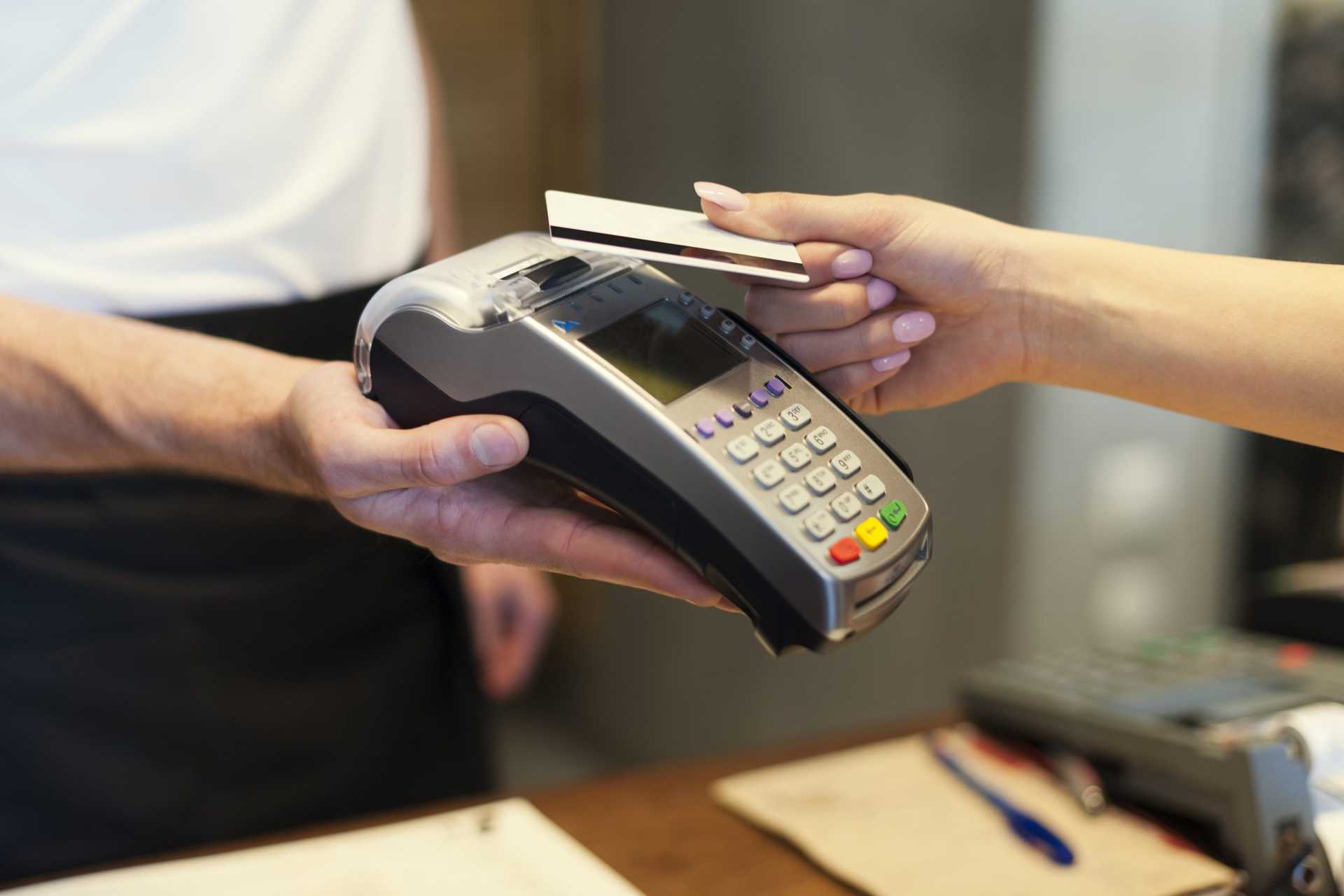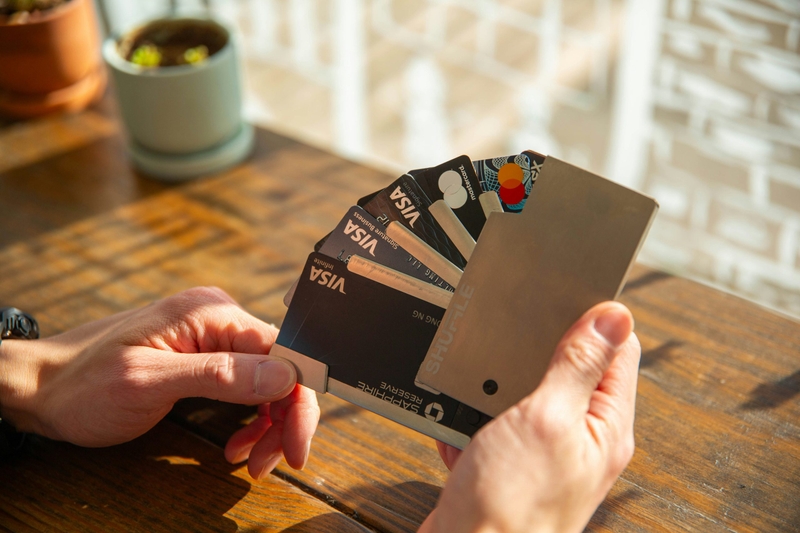

What Is a Merchant Acquiring Bank
A merchant acquiring bank, or simply merchant acquirer, is the financial institution that enables businesses to accept card payments (debit or credit). Its core role sits at the heart of the card payment ecosystem: authorizing, clearing, and settling transactions in a way that is both fast and compliant.
VELLIS NEWS
20 Aug 2025
By Vellis Team
Vellis Team
Automate your expense tracking with our advanced tools. Categorize your expenditures
Related Articles

Vellis News
23 September 2025
What Is the TMF MATCH List & How to Get Off of It
Running a business today almost always requires accepting credit card payments. But when your business is flagged as high risk and suddenly loses access to payment processing, you might get on the TMF MATCH list.

Vellis News
11 April 2025
What Are International Financial Reporting Standards (IFRS)?
International Financial Reporting Standards (IFRS) are globally recognized accounting rules designed to make financial statements consistent, comparable, and transparent across borders.

Vellis News
24 April 2025
Best Cities for Startups in Canada Based on Cost (2025)
A new report from Vellis Financial ranks Canadian cities by startup cost—revealing where entrepreneurs can stretch their runway, and where high expenses may slow growth.
Understanding what is a merchant acquirer and how it differs from an issuer or intermediary bank sets the stage for selecting the right payment infrastructure, securing compliant operations, and delivering reliable service to your customers no matter where they are.
The Role of a Merchant Acquiring Bank
In practice, a merchant acquiring bank connects merchants, payment processors, card networks (like Visa or Mastercard), and issuing banks (the banks that issued the customer’s card). Here’s how it operates:
- Authorization: When a customer uses their card, the acquirer forwards the transaction request to the card network, which then sends it to the customer’s issuing bank.
- Clearing: After authorization, the acquirer aggregates transactions in batches to be cleared through the card network.
- Settlement: Funds are transferred from the issuing bank to the acquirer, minus transaction fees, and then deposited into the merchant’s account.
Throughout this process, the acquiring bank evaluates transaction risk, ensures compliance with PCI DSS and card network rules, and provides fraud monitoring tools to protect both merchant and customer.
How the Payment Process Works
Payments follow a well-defined lifecycle, often called the four party payment process model, involving:
- Cardholder (customer)
- Merchant
- Acquirer bank
- Issuer bank
Each plays a distinct role:
- Authorization: Cardholder initiates payment → Merchant → Acquirer → Card network → Issuer → Response back.
- Batching: Transactions are grouped for processing.
- Clearing: The merchant’s bank sends the transactions to card networks for settlement.
- Settlement: Issuing bank sends funds to the acquirer, which deposits into the merchant’s account.
The acquirer bank is involved at every stage to front the transaction, collect funds, manage fees, and ensure the deposit lands in the merchant’s account.
Acquirer Bank vs Issuer Bank
Understanding the difference between acquirer bank and issuer bank is crucial in grasping how payments flow.
| Bank Type | Role | Relationship |
| Acquirer Bank | Processes and settles merchant transactions | Partners with merchant |
| Issuer Bank | Issues cards and authorizes payments | Works with cardholder |
In short, the acquirer bank serves the merchant; the issuer bank serves the cardholder.
Why Businesses Need a Merchant Acquiring Bank
Every merchant that wants to accept card payments needs an acquiring bank. Key benefits include:
- Transaction acceptance: Makes card processing possible, in-store or online.
- Faster settlements: Typically deposits funds within 1–3 business days.
- Fraud protection tools: Built-in risk and chargeback management.
- Customer support: Dedicated service for disputes, refunds, and system issues.
Retail stores, e-commerce platforms, and international merchants all rely on these banks for real-time processing, even enabling multi-currency and cross-border transactions by routing through card networks worldwide.
How to Choose a Merchant Acquirer
Selecting the right acquirer involves evaluating:
- Fees: Transaction fees, monthly account fees, and chargeback rates.
- Supported networks: Visa, Mastercard, Amex, Discover, regional schemes.
- Integration options: Compatibility with point-of-sale (POS) systems and online checkout tools.
- Fraud tools and support: Tools for risk screening, chargeback alerts, and security analytics.
Banks vs. third-party acquirers:
- Bank acquirers: Strong reputation, direct deposit reliability.
- Third-party acquirers: Often easier onboarding and flexible contract terms.
Examine contract terms carefully, especially termination clauses and settlement schedules.
Risks and Compliance Considerations
As the merchant acquirer takes on payment risk, compliance and security are paramount:
- PCI DSS compliance: Ensures card data is stored, transmitted, and processed securely.
- Chargeback management: Acquirer provides tools and policies to dispute fraudulent transactions.
- Fraud monitoring: Real-time screening and risk scoring to prevent abuse.
- KYC (Know Your Customer) and AML (Anti-Money Laundering): Ask merchants to validate identities and report suspicious activity.
A reputable acquirer bank will help merchants through the compliance process and assist in audit readiness.
Frequently Asked Questions (FAQs)
What is the difference between a payment processor and a merchant acquirer?
Define both roles and highlight how they work together in the transaction lifecycle.
Can an acquiring bank also act as a payment gateway?
Explain that while some acquiring banks offer gateways, these are generally separate services.
Is an acquiring bank required for online businesses?
Yes, for accepting credit/debit cards, an acquiring bank or acquirer partner is necessary.
Are there fees associated with using a merchant acquiring bank?
Yes, describe common fee structures such as transaction fees, chargeback fees, and monthly fees.
Can I change my acquiring bank?
Yes, explain the process and what merchants should consider before switching.
References
Visa. (2023). Role of the acquiring bank in card payments. Visa. Retrieved from https://usa.visa.com/dam/VCOM/download/merchants/Visa-Ultimate-Factsheet.pdf
Mastercard. (2022). Four-party payment process model guide. Mastercard. Retrieved from https://www.mastercard.us/content/dam/mccom/en-us/documents/mastercard-four-party-model-factsheet.pdf Federal Reserve Bank of Chicago. (2024). Intermediaries in the payments ecosystem: Definitions and roles of acquirers and issuers. Retrieved from https://www.chicagofed.org/publications/payments-system-review/intermediaries

Ready to transform your financial management?
Sign up with Vellis today and unlock the full potential of your finances.
Related Articles

Vellis News
31 March 2025
Merchant Account Underwriting: A Guide for High-Risk Businesses
Merchant account underwriting is a crucial process for high-risk businesses, ensuring they can process payments securely while managing the potential risks associated with their industries. The underwriting process scrutinizes various factors, including sales volume, transaction sizes, and overall business operations, to assess the level of risk involved.

Vellis News
18 August 2025
What Should I Look for in a Dental Payment Processing Provider?
Running a successful dental practice today means providing excellent care and staying on top of business operations at the same time. This is why having the right dental payment processing provider can be a game-changer.

Vellis News
5 November 2025
Streamlining Customer Onboarding with Open Banking APIs
Customer onboarding is the process through which financial institutions and fintechs verify and register new customers, granting them access to banking services or digital financial products.
We use cookies to improve your experience and ensure our website functions properly. You can manage your preferences below. For more information, please refer to our Privacy Policy.
© 2025 Vellis Inc.Vellis Inc. is authorized as a Money Services Business by FINTRAC (Financial Transactions and Reports Analysis Centre of Canada) number M24204235. Vellis Inc. is a company registered in Canada, number 1000610768, headquartered at 30 Eglinton Avenue West, Mississauga, Ontario L5R3E7, Canada.

